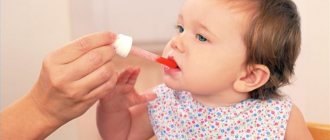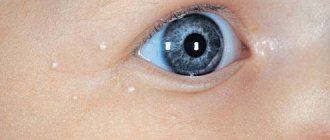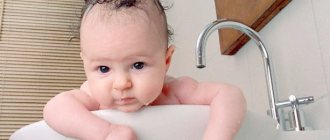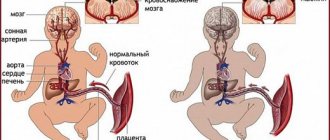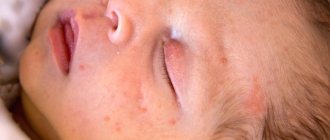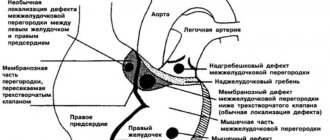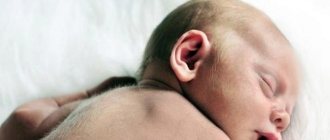A hernia is a disease that manifests itself by the protrusion of an organ through an opening, either natural or that appears during the development of the disease. This happens due to the displacement of the organ and its subsequent incorrect position. As a result, the organ becomes very vulnerable, disruption of its functions and injuries are possible.
An umbilical hernia in a newborn is especially frightening: young parents are concerned about the health of their child and panic when they notice such an illness.
On average, a hernia in newborns is observed in 25% of infants; premature infants are more often at risk of development. We will help parents deal with this problem: we will consider the symptoms and signs of a hernia, its treatment and preventive actions.
How to identify a hernia in a child: observation and symptoms
After the umbilical cord falls off, parents notice that the belly button protrudes when the baby strains, cries or screams. Seeing a hernia is easy and simple - it looks like a round or oval bulge. Usually the protrusion is easy to put back into place, and this does not cause any discomfort to the baby.
But! If you first notice such a symptom in your baby, he should first be examined by a doctor to make an accurate diagnosis.
A hernia can be confused with a possible cancerous tumor or other ailment, so the first thing you need to do is understand what you are dealing with. A hernia can be put back into place, but malignant tumors cannot.
The size of the hernia directly depends on the size of the muscles in the abdomen. It may also increase in the first months. If the size is large, the surrounding skin swells noticeably. If you gently press your finger into the navel area, it will penetrate into the abdominal cavity - this is another evidence of the disease.
Umbilical hernia: let's define the terminology
An umbilical hernia is a rounded protrusion in the navel area in newborns. Before birth, the baby is fed through the umbilical cord, but after birth he no longer needs it, and the umbilical cord is cut off. Ideally, within a month, the umbilical ring should tighten and the umbilical cord vessels should close. If this does not happen, parts of the internal abdominal organs may protrude through the hole:
- greater omentum;
- Intestinal loops;
- Peritoneum.
Symptoms of an umbilical hernia appear only in the form of a protrusion in the navel area. If you gently press on the bulge, it will go inward. When the baby is in a horizontal position, for example, lying on his back, the hernia becomes invisible.
The size of the hernia depends on the size of the umbilical ring. If it is small, then an umbilical hernia in children may occasionally appear under certain conditions, and then go away on its own. With significant sizes, the protrusion is visible to the naked eye. It increases with crying or straining.
Signs of a hernia in newborns are usually noticed by a pediatrician when, during a monthly examination, he feels the umbilical area of a baby. If the umbilical ring passes the doctor's fingers through the abdominal cavity, then there is a hernia. Also, using palpation, the pediatrician determines the size of the umbilical ring and the edge of the hernial orifice. He can refer the mother and child to a consultation with a surgeon.
Useful: How to get rid of seborrheic crust on a baby’s head?
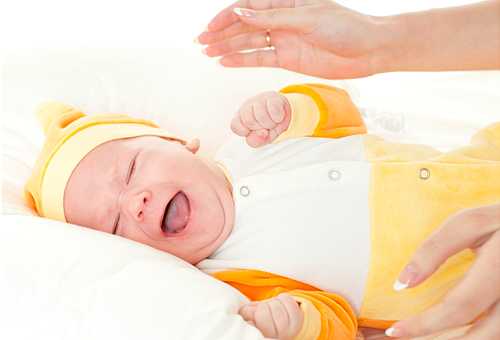
Umbilical hernia: causes of appearance
- Heredity. If one of the parents had a hernia in childhood, there is a high chance that the child may also develop one.
- Premature and/or complicated pregnancy.
- Weakness of the abdominal muscles.
- Anomaly of connective tissues.
- Low birth weight.
- Constipation and gas formation.
- Excessive crying and/or coughing in the infant.
- Pathology of the abdominal wall.
- Rickets.
In many ways, the appearance of a hernia depends on the development of the fetus during pregnancy, when the health of the unborn child is significantly influenced by the lifestyle of its mother. Eating smoked and spicy foods, indulging in coffee, alcohol and cigarettes can cause excessively soft tissue without tone in a child. This can subsequently lead to the formation of a hernia.
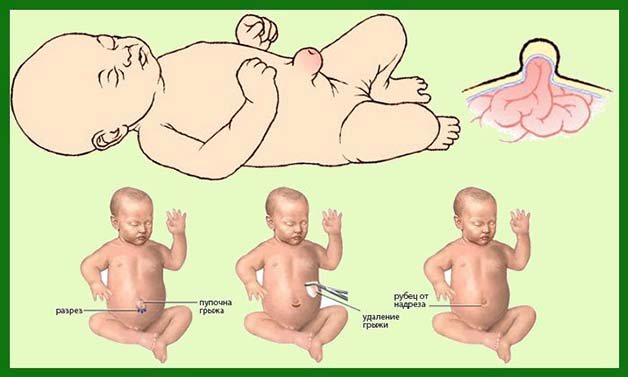
Reasons for appearance
Previously, it was clearly explained that there is an acquired and congenital umbilical hernia in a newborn. The reasons for its appearance are also indicated. One has only to add that the most important thing is to detect it in time. To do this, parents need to carefully examine the baby’s navel during or after bathing. Usually, in the case of identified pathology of closure of the umbilical ring, some compaction is observed in its area. Sizes can vary: from a pea to several centimeters in diameter. When pressed, the child usually does not experience any unpleasant sensations, and all fragments of the abdominal organs easily return to their previous position. When the umbilical hernia in newborns is small (the protrusion of the navel above the abdomen is no more than one and a half centimeters), then the process of its disappearance lasts about several weeks, otherwise recovery takes 2-3 months.
Traditional treatment
If your baby has been diagnosed with a hernia, you need to provide him with proper care at home.
- Before feeding, the baby is placed on his stomach for a short period of time on a hard and flat surface covered with a clean diaper. You can post it after the umbilical wound has completely healed.
- It is necessary to massage regularly. On this issue, it is better to consult with your doctor: he will explain what and how to do correctly, and perhaps recommend a suitable specialist. In general, tummy massage is performed as follows. It is carried out from the second week, when the umbilical wound has completely healed. The massage is performed with soft clockwise movements, synchronous counter stroking (with the right hand on the left side down, with the left hand on the right side up), stroking the oblique muscles (one hand is on the navel area, the other performs stroking movements). It is important that the child is comfortable during the massage and does not cry.
- Physiotherapy. Physical therapy, like massage, is carried out by a massage therapist or exercise therapy specialist. Parents can study with a professional to understand how to treat themselves at home, or take their baby for treatments regularly.
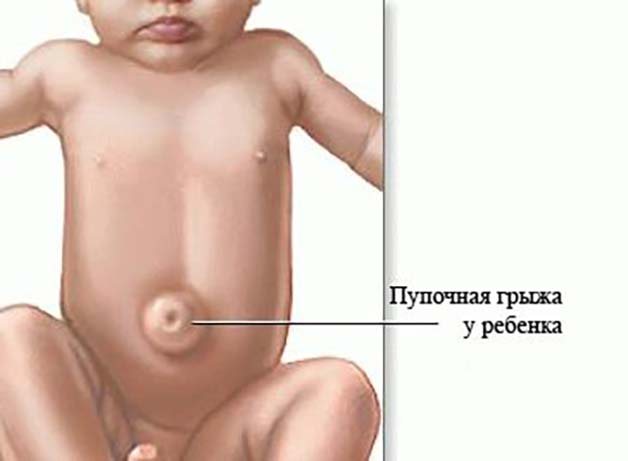
Laying on the tummy, massage and physical therapy are traditional treatments for hernia. Also, modern medicine offers special therapeutic plasters that hold the hernia inside the ring and help the abdominal walls to strengthen. The product is convenient and good, but can cause irritation on the baby’s delicate skin. An alternative option without irritation is to use a special bandage. It is recommended to use such products after consultation with a pediatrician.
If the disease disappears within 6 months with this treatment, then everything is normal. If the hernia does not go away after this time, surgery may be required.
Treatment of umbilical hernia
This section will describe drastic treatment measures if an appropriate diagnosis is made: umbilical hernia in a newborn. Treatment will consist of the use of special means or surgery. So, I would like to note that medicine does not stand still, and along with ordinary plasters (which are usually used to seal a baby’s navel), they came up with a special type. It is easy to use and does not cause any discomfort to the child. By the way, there is no need to resort to the methods of our great-grandmothers, who applied a copper penny to the navel of crumbs with such a problem. Doctors warn that in this way it is easy to get an infection through an unhealed wound. It follows that for getting rid of such an unpleasant ailment as umbilical hernia in newborns, the patch is much more effective than traditional medicine.
Complications of hernia in a newborn
The most important and dangerous complication is strangulated hernia. It occurs rarely, but knowing how to detect it on time is necessary for every parent whose child has a hernia. Symptoms are as follows: severe crying and discomfort, loss of appetite or refusal to eat, severe paleness or redness of the skin at the site of the hernia, vomiting.
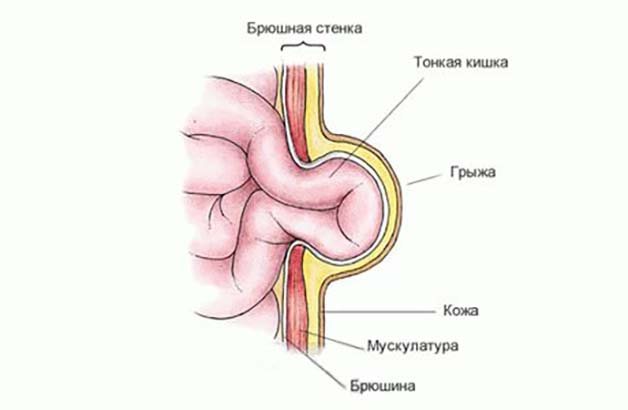
It is important to understand the seriousness of the situation in the event of such a complication.
If a hernia is strangulated, self-treatment is prohibited. Immediate treatment is required to avoid necrosis of living organ tissue, and as soon as possible.
Peritonitis, an inflammation followed by the discharge of pus, may also occur. If medical assistance is not provided in time, death is possible. If the infringement is observed within 24 hours and the child is not given the necessary assistance, there is a 25% chance of death.
How to identify a hernia in infants, symptoms and signs
In young children, an umbilical hernia is often diagnosed. Its development is controlled by the surgeon. In some cases it goes away on its own, while in others additional intervention is required - conservative or surgical. Parents need to follow the recommendations (do exercises, massage) and know the main symptoms of its manifestation.
How to recognize pathology
An umbilical hernia in infants appears in the navel area as a result of muscle weakness, most often immediately after birth.
Signs of pathology can be easily seen. Parents may observe a slight thickening and protrusion of the child’s navel, which increases significantly during crying and screaming. The protrusion can be easily straightened by lightly pressing on the navel.
You can hear a characteristic rumbling sound. The child does not experience any discomfort. In severe cases, the hernia can grow. In this case, the tummy in the navel area becomes dense, and the bulging area expands.
A scheduled examination by a surgeon is provided at 1 month. It is this doctor who can make the final diagnosis – an umbilical hernia. When pressing on the baby's tummy, the finger goes deeper into the abdominal cavity. When the child is healthy, this should not happen.
The danger of the pathology is that there is a risk of muscle strangulation of a certain area of the intestine. This condition poses a danger to the child's life. The following symptoms of pinching can be identified:
- the umbilical hernia has become hard and causes pain to the child;
- it is not pressed in;
- you may notice redness near the navel;
- vomiting appears.
Parents can independently determine the pathology of the baby in the groin area - a protrusion of a pathological nature. An inguinal hernia is the exit of abdominal organs through the inguinal canal.
An inguinal hernia has the following symptoms:
- when the child is tense, cries, screams, the lump increases in size;
- the lump is soft to the touch, does not cause any discomfort to the child, and can be easily pushed in;
- swelling of the scrotum in boys and labia in girls is observed.
An inguinal hernia in a child can lead to pinching of a loop of intestine. Symptoms include severe pain, vomiting and loose stools. In the future, the bladder becomes compressed, frequent urination occurs, and body temperature may increase.
Causes of the problem
One of the reasons for the appearance of a congenital umbilical hernia in an infant is heredity. The common belief about improper cutting of the umbilical cord after birth has nothing to do with the formation of muscle tissue weakness.
In the womb, the baby receives nutrients for 9 months through the umbilical cord, which is cut off in the maternity hospital immediately after birth. The umbilical cord vessels should close soon. The umbilical ring tightens over the course of a month.
Other factors that influence the appearance of an umbilical hernia in a child include the following.
- Immaturity of muscle tissue. This problem most often occurs in children born prematurely or who were born underweight.
- The umbilical opening has weak muscles.
- Diseases caused by metabolic disorders (for example, rickets).
- Features of the structure of the anterior abdominal wall.
- Intestinal problems: constipation, colic, flatulence.
- Excessive crying, screaming, or coughing.
A hernia can occur at different times and have different sizes. Sometimes, when it is small in size, it can only be identified by crying. If the protrusion is large, then it becomes noticeable even when the child is at rest.
A mass in the abdominal area does not pose any threat until the age of 5 years. If the problem does not disappear by this age, surgery is prescribed. .
An inguinal hernia develops most often in boys. In this case, it can descend into the scrotum, then it is called inguinal-scrotal. The main cause is the abnormal structure of connective tissues and a genetic factor.
If signs of an inguinal hernia are detected, you should consult a doctor, even if it does not cause discomfort. In any case, there is a risk of complications.
In a girl, growth may occur into the hernial sac of the ovary, in a boy - into the intestinal tract.
An inguinal hernia can also appear for other reasons:
- high birth weight of the child (more than 5 kg);
- abdominal injuries to the baby during childbirth;
- severe cough, frequent crying;
- difficulty urinating.
Therapeutic measures
The specialist gives recommendations on further actions. Often an umbilical or inguinal hernia of any size goes away as the child grows older. The muscles grow, become strong, and the pathology disappears without surgical intervention.
For therapeutic and preventive purposes, parents need to take a number of measures:
- often place the child on a hard surface (for 10–15 minutes). In this case, the abdominal muscles are strengthened;
- do a tummy massage. The first sessions should be carried out by a specialist;
- engage in physical therapy.
You can do massage from the second week, after the umbilical wound has healed. The main movement is stroking clockwise. Do not put too much pressure on your stomach.
When an umbilical hernia becomes large, your doctor may recommend applying a patch. It will keep the hernia inside until the muscles get stronger.
But the patch can cause inflammation and irritation. In this case, this method is not suitable. A special bandage is prescribed. It is a belt that is attached around the abdomen. In the navel area there is a pad on the bandage that will hold the hernia inside.
Before deciding on surgery, the doctor examines the medical history and determines the severity of the condition. Surgery is often required when the hernia occurs after six months and continues to grow even after one year of age.
Emergency surgery is necessary for various complications: strangulation, tissue rupture.
An inguinal hernia is treated with conservative and surgical methods. Conservative treatment is carried out when the child is under 6 months old and the condition is not severe.
We can hope that a hernia in a baby will go away on its own. Medicines that strengthen the immune system are prescribed and a special retaining bandage is put on.
But an infringement can appear at any time, therefore, as soon as an inguinal hernia is diagnosed, surgical intervention is performed.
If the disorder persists at an older age, then a planned operation should be performed at 2 years of age.
The development of inguinal and umbilical hernias can be prevented. It is enough just to monitor the child’s diet, avoid constipation and heavy loads, and strengthen the walls of the abdominal cavity with the help of exercises.
Source: https://grudnichky.ru/zdorove/gryizha-u-grudnichkov-simptomyi.html
ethnoscience
If the doctor has diagnosed a mild and harmless hernia and has allowed the use of folk remedies as a supplement, you can use any of the suitable recipes. They will help cure the hernia faster.
- Wipe the copper coin and wrap it in a soft and clean cloth, carefully place it on the hernia and secure it with a bandage. You can also thoroughly clean the coin, then warm it in your hands and use it to perform a light massage, alternately stopping at the site of development of the hernia.
- Make a small cake from medicinal clay, wrap it in a bandage and heat it to body temperature. After this, place it at the site of the hernia and secure it with a bandage. When the clay begins to dry out, the cake can be removed. The procedure is repeated the next day. If treatment is successful, the hernia becomes lighter, and after three days it completely disappears.
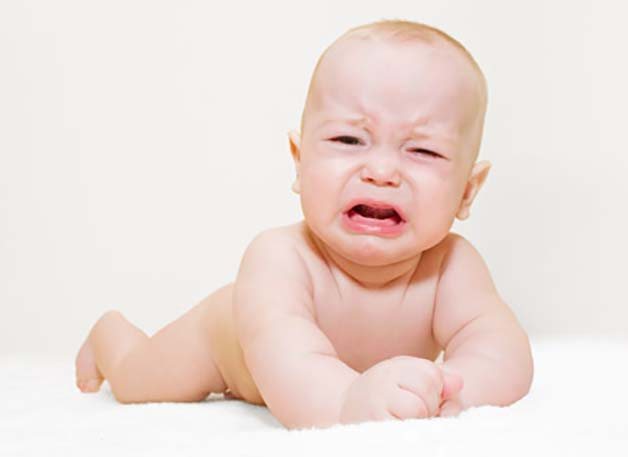
Hernia prevention
To protect the baby from the possible appearance and development of a hernia in the first months of life, parents need to follow several specific preventive rules.
- Get rid of excessive gas formation and constipation in your baby. In case of gas formation, a gas outlet tube is used, and Plantex, Bobotik, Espumisan, dill water, etc. are prescribed. In case of constipation, glycerin suppositories, Duphalac, and Microlax microenemas are prescribed.
- Place your baby on his tummy more often to strengthen his muscles.
- Do gymnastics regularly. It is useful not only as a prevention of this disease, but also for the full and healthy development of the baby.
- When planning a pregnancy, the expectant mother needs to reconsider her lifestyle and diet. You should give up alcoholic drinks and cigarettes, switch to a healthy and nutritious diet, and give up excessively salty, sweet, spicy and smoked foods. It is necessary to monitor your health and the health of the fetus in general.
Hernia in newborns on the testicles photo
With inguinal hernias in children, the internal organs from the abdominal cavity enter the subcutaneous layer through defects in the inguinal canal. When the hernial sac in boys descends into the scrotum, an inguinoscrotal hernia is formed.
An inguinal hernia is much less likely to form in a baby boy born at term than in a premature baby. Girls do not develop hernial bulges in the groin as often as boys. Right-sided formations in boys develop in 50% of cases of hernias, bilateral - in 10%. Girls suffer mainly from bilateral hernia formations.
Related ailments
Inguinal hernias mostly affect babies with abnormal development of connective tissues and the presence of genetic diseases. Hernial protrusions in the groin can be combined with other abdominal hernias. They are accompanied by various birth defects.
They develop against the background:
- hip dysplasia;
- hip dislocations;
- diseases of the nervous system, incl. spinal lesions (displacement of intervertebral discs, formation of degenerative-destructive changes in inert and cartilaginous tissues).
Causes
Boys born with an inguinal hernia have had family members undergo surgery to remove it.
Doctors believe that it is not the predisposition to pathology that is inherited, but the factors that cause it: congenital disorders of connective tissue structures.
At 10-12 weeks, the embryo begins to develop a vaginal process. Along it, the genitals of children descend to their designated place. The testicles are formed deep in the abdominal cavity. They descend into the scrotum by the beginning of the 9th month of pregnancy. As soon as the genitals descend, fusion of the vaginal process begins.
If the testicle has not descended completely, has not taken its place, or the fusion of the processus vaginalis occurs with pathological disturbances, there is a risk of:
- hydrocele of the testicle and scrotum;
- cystic formations on the spermatic cord;
- hernial protrusion in the groin (in this case, segments of the omentum and intestines are pulled into the hernial sac).
A hernia in the groin is formed by:
- hernial gates, formed from the inguinal ring;
- a hernial sac arising from the tissues of the vaginal process, behind which the spermatic cord passes.
Factors leading to a hernia after the birth of a baby:
- abdominal wall injury;
- excess body weight;
- mechanical strains arising from excessive crying and screaming;
- post-operative scars;
- difficulty urinating.
Symptoms
Signs of pathology in children appear in conditions caused by an increase in intracavitary pressure. The hernial protrusion in the groin increases when the baby cries, screams, strains, or strains. Sometimes children complain about:
- burning sensation;
- soreness in the groin area;
- flatulence;
- constipation.
The hernial formation is elastic and soft. When pressed, it adjusts easily and takes a natural position.
At the moment of palpation, rumbling occurs. The sound is louder if part of the intestine is pulled into the hernial sac. When reducing a non-advanced formation, the child does not experience pain or discomfort.
Complications
Pinching of the hernial sac is a dangerous complication. Compression of the inguinal hernia in newborn boys leads to circulatory disorders. The delivery of nutrients to the clamped organs is partially or completely stopped.
Deficiency or lack of nutrition contributes to tissue necrosis. Dead tissue causes inflammation, which progresses to peritonitis.
Dangerous inflammation that develops into peritonitis is caused by the accumulation of feces (intestinal obstruction). Strangulated intestines atrophy within 24 hours.
Undigested food accumulates in the upper intestines. The child's stool is delayed and the stomach becomes bloated. The baby suffers from unbearable pain, prolonged nausea and vomiting.
Without emergency surgical intervention, the baby dies.
Parents are able to accurately determine the moment of strangulation of the hernial protrusion. Your baby may look like this: he is vomiting, fussing, and crying. The hernial formation hardens and cannot be reduced. Palpation hurts. Then the pain subsides. The baby is holding back stool. He is lethargic and weakened.
Since irreversible processes begin in the body immediately after a hernia is pinched, it is necessary to immediately call an ambulance.
The surgeon, having examined the child, performs emergency surgery before necrosis of the tissues of the pinched organs occurs. Intestinal loops die within 3-4 hours.
In some cases, surgery can be done without surgery. Boys are given antispasmodic and sedatives, and attempts are made to reduce the hernial protrusion that has been strangulated.
If the organs fall into place, the surgeon analyzes the situation. When the hernia does not bother the child too much, surgical treatment is postponed, and a little later it is done as planned.
Multiple recurrences of pinching cause the formation of dense adhesions that can fuse the spermatic cord with the sac. This complicates the operation.
Surgery
Removal of hernia formations in children is not delayed. The doctor, having confirmed the diagnosis, sets a date for the operation. Babies suffering from allergic pathologies or diseases of the nervous system undergo excision of the hernia. The protrusion is removed at 7-8 months. The baby is under medical supervision the entire time before the surgical procedure is performed.
Surgical treatment is carried out under general anesthesia (anesthesia). In some cases, local anesthesia is used (when the child is over 9 years old). The hernial protrusion is excised using open and closed methods.
During an open intervention, a 1.5-12 cm incision is made and the hernial sac is removed. To prevent a relapse in the future and the hernial sac from falling out again, the tissues are strengthened. Autoplasty is performed: the ends of the hernial orifice are placed on top of each other, stitched in layers, or a mesh implant is fixed over the defect.
With a closed technique - laparoscopy, the hernia is removed by making 3 small punctures. The procedure is performed using general anesthesia.
With this method, tissue is less damaged. The pain in the postoperative period is not as severe as after open surgery. The baby is recovering quickly.
Parents, together with the doctor, decide when and in what way to operate on a hernial protrusion in the groin, and what type of mesh endoprosthesis to put on the child.
Forecast
Conservative therapy is not the best way to treat inguinal hernia in children. It leads to relapses and pinching of the hernia formation. All folk conspiracies in the form of placing a patch on the navel will not be able to help the baby get rid of the pathology. Pathology is treated surgically.
Source: https://detki.shukshin-net.ru/gryzha-u-novorozhdennyh-na-jaichkah-foto/


